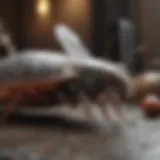Siding for Walls: Comprehensive Material Insights
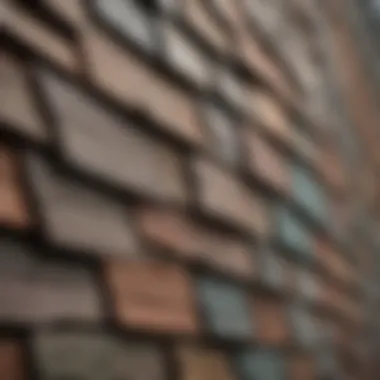

Intro
Overview of Topic
Siding for walls is a crucial element in the home improvement industry. It not only contributes to the aesthetic appeal of a building but also provides significant protection from environmental elements. The materials used for siding can vary widely, offering homeowners various choices based on durability, maintenance needs, and cost. Understanding the importance of siding goes beyond just aesthetics; it can influence insulation, potential energy savings, and sustainability.
Choosing the right siding also reflects on a homeowner's overall investment in their property. The exterior is the first thing seen, and poor choices can lower a property’s value. Thus, it becomes vital for homeowners to make informed selections regarding siding materials and techniques available on the market today.
Common Challenges and Solutions
Homeowners often encounter common challenges when it comes to siding. Typical issues include:
- Weather Damage: Prolonged exposure can lead to cracks and warping.
- Maintenance: Some materials require frequent upkeep whereas others are more forgiving.
- Cost Fluctuation: Various siding materials have different costs associated with both purchase and installation.
To overcome these challenges, consider the following solutions:
- Choose Durable Materials: Research shows that materials like fiber cement can withstand severe weather conditions and require less maintenance.
- Plan a Proper Budget: Understanding initial costs versus long-term savings, especially with energy-efficient options can help you select wisely.
- Hire Experienced Contractors: Potential structural issues can be avoided with professional installation, minimizing costs in the long run.
“Investing in high-quality siding yields years of durability, reducing frequent repair costs.”
Product Recommendations
When it comes to siding products, several industry brands stand out. Among these are James Hardie, LP SmartSide, and vinyl siding from CertainTeed.
James Hardie
- Material Type: Fiber cement.
- Benefits: Exceptional durability, fire-resistant, and available in a range of styles and colors.
- Features: The HardiePlank lap siding offers a weather-resistant finish that requires minimal maintenance.
LP SmartSide
- Material Type: Engineered wood.
- Benefits: Provides an appealing wood-like finish while being resistant to insects and water damage.
- Features: Easy to install, making it a favorite for both DIY projects and professional installations.
CertainTeed Vinyl Siding
- Material Type: Vinyl.
- Benefits: Variety in styles and colors with low maintenance requirements.
- Features: Energy-efficient options available, making it a popular choice for eco-conscious homeowners.
Step-by-Step Guides
For homeowners ready to install or replace their siding, following practical steps is necessary.
- Assess Current Conditions: Inspect the current siding for damage. Remove any section that is severely compromised.
- Select the Right Materials: Based on aesthetic appeal and durability, choose wisely from recommended brands.
- Measure Areas Accurately: Measure wall dimensions carefully to determine the amount of siding required.
- Prepare Surfaces: Ensure the walls are clean and dry before installation.
- Follow Installation Instructions: Whether hiring professionals or opting for DIY, thorough adherence to the guidelines is essential.
Properly graded techniques can lead to impressive and long-lasting results.
Understanding Siding
Siding plays a cruciaal role in the overall design and functionality of a building. It is not just about aesthetics, but also about protection and energy efficiency. Selecting the correct siding material means considering various aspects, such as durability, maintenance, and climate implications. Understanding siding enables homeowners to make informed choices, ultimately enhancing property value and livability.
Definition and Purpose
At its very core, siding refers to the exterior covering of a structure. Its primary purpose is to protect the underlying materials from weather. Siding serves multiple functions: shielding against atmospheric elements, providing insulation, andincreasing the home’s visual appeal. Correctly installed siding can reduce heat loss. This can lead to a more enerjy-efficient structure, which is beneficial for both the environment and utility bills. Moreover, it allows for personal style and individuality
Historical Context
Siding has a rich history. While modern materials are quite different, the concept of an external layer isn't new. Originally constructed from natural materials, such as wood and clay, societal needs evolved, inviting the introduction of contemporary siding choices. In the 19th century, wood emerged as a popular siding option. As building techniques improved, more robust materials were needed. This prompted a shift towards alternative options like vinyl and fiber cement. Each material reflected changing societal preferences, technological advancements, and climate considerations, shaping today's options in an influential way.
Types of Siding Materials
Understanding the types of siding materials is pivotal in selecting the appropriate siding for your walls. Each material brings its own unique benefits and considerations. The choice of siding reflects not just aesthetic sensibilities, but also practical aspects such as durability, cost, and maintenance requirements. While making a decision, it's essential to weigh the advantages and disadvantages of each option thoroughly.
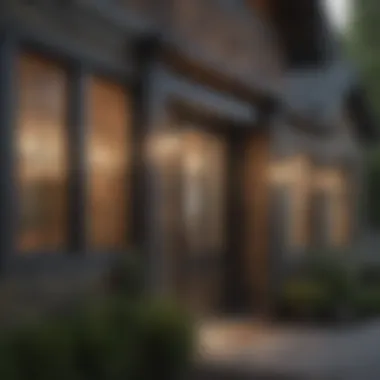

Wood Siding
Natural Aesthetics
Natural aesthetics is one of the most notable characteristics of wood siding. Wood can provide a warm, inviting and authentic look that many homeowners desire. The texture and grain of wood offer a uniqueness that synthetic materials cannot replicate. Wood can be stained or painted in various shades, allowing owners to achieve the exact appearance they envision. A crucial advantage of this is its ability to blend seamlessly with many architectural styles, whether traditional or contemporary.
However, it's necessary to recognize that wood's aesthetic appeal comes with maintenance costs. Over time, wood siding needs to be painted or stained to protect it from the elements, which can be labor-intensive.
Maintenance Requirements
The maintenance requirements of wood siding can be seen as both a gift and a curse. While the charming look enhances curb appeal, it demands diligence. Regular inspection and treatment against insects like termites or issues like rot are essential. Applying a weather-resistant seal or paint can prolong the material's life. On the downside, improper maintenance can lead to extensive repairs. Overall, future upkeep will influence ownership desires among homeowners seeking convenience.
Vinyl Siding
Cost-Effectiveness
Cost-effectiveness stands out as a primary motivating factor for many homeowners opting for vinyl siding. As a lower-cost option relative to other siding materials, vinyl is budget-friendly. It requires less financial outlay in both materials and installation. Along with the initial affordability, it’s also low-profile concerning ongoing maintenance; you’ll find that periodic cleaning is often sufficient to keep vinyl looking fresh.
Despite these advantages, it’s crucial to note that vinyl siding can be less appealing regarding customization options since its colors may fade over time. Thus, homeowners must balance upfront costs with potential long-term visual drawbacks.
Durability
Durability is another key characteristic of vinyl siding that makes it attractive to homeowners. Vinyl can withstand adverse weather conditions without significant deterioration. It often resists fading and can flex under pressure, unlike other materials that might crack. This strength ensures that, when properly installed, vinyl can serve a property effectively over time.
However, it's worth discussing its limitations. High heat can cause distortion or warping for some types of vinyl siding. With awareness of this detail, potential buyers can make educated decisions.
Fiber Cement Siding
Fire Resistance
Fire resistance may be viewed as one of the essential advantages of fiber cement siding. This material can withstand flames better than wood or vinyl, making it a safer choice where wildfires are a risk. Its composition helps limit the spread of flames, providing peace of mind for homeowners concerned about fire safety.
This safety feature can significantly reduce homeowners' insurance premiums as properties fitted with fire-resistant materials often receive discounts.
Longevity
Longevity is notably a strong selling point of fiber cement siding. The material commonly lasts longer than wood or vinyl, often providing promises of up to 50 years. Such claims are highly attractive, as they can translate to savings over the home's life.
On the downside, installation may require expert handling due to its weight compared to other sidings. Therefore, potential higher installation costs should be factored into the overall investment when planning.
Metal Siding
Rust Resistance
Rust resistance highlights metal siding's robust nature. While exposure to moisture could spell troubles for many materials, metal siding commonly employs coatings that provide a barrier, warding off rust. Owners benefit from this, as steel and aluminum sidings withstand corrosion while holding their appeal indefinitely.
Nevertheless, based on geographic conditions, some maintenance may still be necessary. Areas with saline air may demand more vigilant oversight to prevent minor imperfections.
Insulation Properties
The insulation properties of metal siding can indeed bear emphasis. Insulated metal options can optimize energy savings, acting as a barrier against high consumption. This action can aid in temperature regulation within the property, providing seasonal comfort and lowering heating bills. Metal sidings enhances properties for environments experiencing extreme climate fluctuations where energy efficiency holds premium importance. However, metal might not deliver as high insulation values as other materials without extra modifications, such as internal insulation.
Brick and Stone Siding
Durability
When it comes to durability, brick and stone siding undergo substantial recognition. These materials can stand resilient against impacts, harsh weathers, and pests. The inherent compressive strength of stone virtually ensures long-term performance, culminating in low servicing costs. Homeowners should note that such displays of durability underscore associated higher installation expense.
Aesthetic Appeal
In terms of aesthetic appeal, brick and stone offer an iconic and timeless quality. Their appearance is often considered sophisticated and elegant. Brick resets remain relevant no matter the trend. Various colors and textures allow customization, while texture enhances a building's dimensionality. Still, it requires professional expertise for installation; thus, budget conscious individuals must consider both the exquisite look coupled with variable expense.
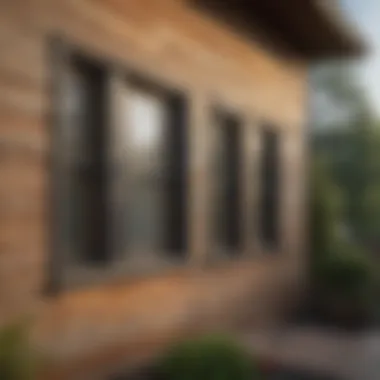

Considering these various materials of siding allows for tailored decisions according the property owner’s priorities. Take time to evaluate each characteristic aligning with personal or further goals before enhancing the exterior.
Benefits of Siding for Walls
Siding plays a crucial role when it comes to wall finishes. It serves not just an aesthetic purpose, but also a functional one. Understanding the benefits of siding for walls can guide homeowners in making informed choices that influence several aspects of their property. Emphasis should be placed on energy efficiency, protection against elements, and enhanced aesthetic appeal.
Energy Efficiency
Insulation Impact
One of the most significant advantages of siding is its impact on insulation. When proper siding is installed effectively, it helps maintain consistent indoor temperatures. This is crucial, especially in extreme weather conditions. The R-value of siding materials can vary, significantly contributing to how well they insulate a home. High R-value materials, like fiber cement, can minimize heat loss. Thus, their insulation impact positions them as desirable options for many homeowners.
Reduction of Utility Bills
Another vital element linked to energy efficiency is the reduction of utility bills. Efficient siding materials can lower heating and cooling expenses by decreasing the loads on HVAC systems. This leads to savings over time. Owners often note lower monthly expenses, providing a continued financial benefit long after the installation is done. Good siding can even yield returns that surpass the initial investment, making it a beneficial approach for many.
Protection Against Elements
Weather Resistance
Siding also acts as a protective barrier against various weather elements. Many modern materials boast excellent resistance properties, eliminating concerns over water damage or decay. Certain materials like vinyl and metal not only stand up to wind and rain but also require less maintenance, making them exceedingly popular choices among homeowners.
Reduction of Structural Damage
Beyond simply resisting the weather, effective siding contributes to a reduction of structural damage in the long run. Over time, prolonged exposure to the elements can lead to significant issues such as mold, rot, or even the formation of ice dams. Since good siding defends against water infiltration, it can effectively extend the life of your structural elements, reinforcing its value for any homeowner.
Enhanced Aesthetic Appeal
Variety of Designs
One outstanding aspect of siding is the variety of designs available. Homeowners can choose from countless styles and materials, ranging from traditional wood and brick to modern fiber cement or vinyl combinations. This rich selection allows for striking individuality in personal or regional aesthetics. Such versatility is appealing to those looking to make their property stand out or align with particular architectural tastes.
Impact on Property Value
Finally, we must consider the impact on property value that siding can confer. A carefully selected and installed siding can increase a home’s market appeal. When homes have visually appealing finishes, it often translates to higher inquiries and more competitive pricing. Ultimately, investing in quality siding materials can lead you to be more appealing when it comes time to sell.
Investing in superior siding serves multiple purposes beyond mere aesthetics.
In summary, the benefits of siding include considerable advantages in efficiency, protection, and appeal. Decisions made in siding selection should reflect careful consideration of how these elements influence overall home maintenance and value.
Installation Processes
When selecting siding for walls, understanding the installation process is crucial. This step not only affects the durability of the siding but also its overall appearance. A thorough installation ensures that materials perform well against various climate conditions and complements the visual design of the property. By looking closely at preparation, actual installation, and post-care, individuals can better appreciate how essential systematic methods prove to this undertaking.
Preparation and Planning
Site Assessment
Site assessment serves as the very foundation of the installation process. It involves an evaluation of the property's specific characteristics, including existing surfaces, slopes, drainage, and exposure levels. The primary characteristic here is the emphasis on analyzing environmental elements, which can contribute significantly to the longevity of siding. Finding suitable conditions or needs is beneficial because, effectively assessing these aspects ensures compatibility between the property and chosen materials. Unique benefits could be its ability to identify potential drainage issues before installation begins, which prevents future complications. On the flip side, one disadvantage might be the time required to conduct a thorough site examination and the potential additional costs involved in remediation before siding installation.
Material Selection
Material selection is the pivotal moment in this entire process. Choosing correct materials directly affects longevity, maintenance requirements, and even aesthetics. A key characteristic here is durability, making it stand out because it's vital in resistance to weather and environmental conditioning. This focus is why witty decisions for siding get much attention in this article. A unique feature of this selection phase is the array of materials with distinctive benefits and designs, allowing owners to reflect personal style in their homes. However, a passing downside may include the initial higher cost of premium materials compared to cheaper alternatives, resulting in varied longevity and potential future expenses on maintenance.
Step-by-Step Installation Guide
Tools Required
Using the right tools is essential, as they directly impact efficiency and effectiveness during installation. A prime focus here is safety and the importance of utilizing professional-grade tools. This focus is beneficial as it elevates the standard of work performed. Key tools include saws, hammers, nail guns, and levels, which all contribute substantially to the overall quality and precision of the installation. A unique aspect of well-prepared tool requirements is ensuring readiness before starting the work, allowing for a smooth process. However, the disadvantage may be the perception of upfront costs if readers are unfamiliar with the necessity of high-quality tools.
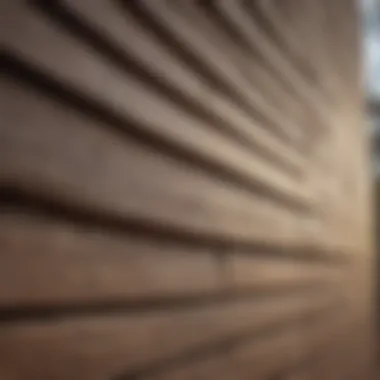

Best Practices
Best practices encompass a range of suggested procedures aimed at achieving exceptional outcomes in siding installation. Key characteristics include attention to details, ensuring accurate measurements, and executing overlaps correctly. Such points are significant as they enhance the visual finish of the siding and strengthen water resistance. This also pertains as a foundational aspect due to compliance with local building codes. A unique feature is understanding weather conditions before starting work, as rain or extreme humidity could hamper the adhesive properties of some materials. A downside could arise if these practices aren't recognized early, causing mistakes and possible delays in project timelines.
Post-Installation Care
Cleaning and Maintenance
Cleaning and maintenance coverage holds significant value as siding requires ongoing attention to preserve its visual appeal and functionality. Primary characteristics under this topic are routine inspections and upkeep efforts like washing or painting. This idea underscores why they are key elements of the longevity element examined throughout this article. Unique to cleaning and maintenance is creating a lemma ‘clean after constructing’, promoting upkeep practices committed to ensuring materials last longer. Neglecting may lead exposition to harm from external elements such as molds and mildews, negatively impacting both value and structure over time.
Identifying Issues Early
Timely identification of issues post-installation plays a vital role in sustainability. Focusing attention here revolves around performing periodic inspections. This is particularly beneficial as it enables property owners to discern problems like cracks or fades promptly. Advantages include easy resolution and near-decisions about possible replacements or Solutions. Unique to this aspect is a systematized approach; being methodical allows observation that flags up if repairs or interventions are necessary early in that stage. Disadvantages might tie to the level of commitment required, as sporadic attention might cause unnoticed gradual changes leading to significant future repairs.
Choosing the Right Siding
Choosing the right siding is critical. Various materials present distinct characteristics that affect a home’s appearance, performance, and durability. A poor choice can lead to the need for future replacements, increased maintenance costs, or unsatisfactory aesthetics. Thus, evaluating options carefully is essential.
Factors to Consider
Climate Considerations
Climate plays a significant role in siding choice. Different regions experience various weather elements which can influence material longevity. For instance, homes in wet climates might need siding with strong water resistance. On the other hand, areas with harsh sun can require materials that resist fading and degradation.
The key characteristic of climate considerations is the ability to predict and prepare for external stressors. Choosing siding fit for local conditions can prevent warping or damage over time, making it a beneficial choice for homeowners. One unique factor is the effectiveness of insulation that certain materials provide. If seasoned creatively, this improves energy efficiency during temperature extremes, helping homeowners reduce utility costs and maintain comfort.
Design Preferences
Design preferences shape the visual impact of a home's exterior. Different siding materials offer varying textures and colors, presenting numerous possibilities for style expression. This includes classic wood, sleek modern vinyl, or enduring stone aesthetics. Matching the style of a siding material with personal taste can increase satisfaction with a home’s appearance.
The key appeal of design considerations lies in customization. The unique feature here is color durability, particularly with options like vinyl which fades less than wood. This quality advantage may appeal to house owners aiming for less frequent maintenance. However, diverse design options can also escalate costs depending on personalization requirements.
Cost-Effective Options
Selecting siding with economic efficiency in mind contributes significantly to budget management. Consideration of long-term versus short-term expenses can aid significantly. For example, certain materials may have a lower upfront cost but require more maintenance over time, thus increasing expenses later. Focus on durability can guide smart investment decisions. Choosing the right siding affects not just aesthetics but also financial dynamics for all homeowners, making it a valuable aspect to thoroughly analyze.
Future Trends in Siding
Understanding future trends in siding is essential for home owners and professionals alike. With an increasing focus on sustainability and innovation in home materials, the siding industry is evolving. Whether you are planning to build a new home or renovate your current one, it is crucial to consider these emerging trends. They not only contribute to home energy efficiency but also enhance durability and aesthetics.
Sustainable Materials
Sustainable materials are reshaping the siding landscape. Many consumers increasingly demand eco-friendly options that minimize environmental impact. Recycled materials, renewable resources, and sustainably-sourced products have gained popularity. These materials often require less energy to manufacture and are designed for longevity.
For instance, wood alternatives like composite siding made from recycled plastics can provide a similar aesthetic without the extensive resource depletion associated with traditional timber. Fiber cement also stands out due to its durability and low maintenance. It utilizes sustainable processes and offers excellent weather resistance.
The embrace of sustainable materials not only reflects a commitment to the environment but can also add value to a property. Builders who choose green materials can stand out in a market that is progressively valuing performance and eco-consciousness. In essence, homeowner satisfaction can be significantly improved when selecting eco-friendly siding options.
Technological Innovations
Technological innovations are revolutionizing how siding is made and installed. Advancements are pushing the boundaries of design flexibility and insulation efficiency. Insulation-enhanced vinyl siding represent a prime example of how technology is improving classic materials. For instance:
- New insulation materials
- Advanced finishes that resist fading and wear
Smart Siding Technologies
Smart siding technologies offer considerable contributions to energy efficiency and home monitoring paired with convenience. One key characteristic of these products is their capability to measure energy consumption patterns. Some smart siding can even notify homeowners of structural or moisture-related issues before they become serious. This proactive approach in building maintenance is invaluable.
A unique aspect of smart siding is its integration with home automation systems. Homeowners can sync the siding features with other smart devices for a robust management system. This interconnectedness allows for better monitoring of the home environment and overall peace of mind. However, adoption may present an initial investment and require a learning curve for some users, thus caution is needed when implementing.
Installation Advancements
Installation advancements within the siding industry make the process more efficient and streamlined. Improved installation methodologies decrease overall build time and errors. A key characteristic of these advancements is the use of new fastening systems that enhance longevity while minimizing labor costs. Systems such as interlocking panels or easy-lock coatings have simplified assembly and reduced the potential for error.
Unique features of some of these advanced systems include faster curing times for adhesives. Homeowners benefit from shorter installation periods, leading to reduced labor expenses and sooner enjoyment of the finished result. Nevertheless, the familiarity of installers with contemporary methods remains critical as increased technology requires a new skill set, possibly resulting in an initial learning curve or adaptation period.
Understanding and leveraging these technological developments offers a significant advantage in choosing the right siding. As they embrace new features and innovative practices, homeowners can ensure they are investing wisely in the exterior of their homes.


